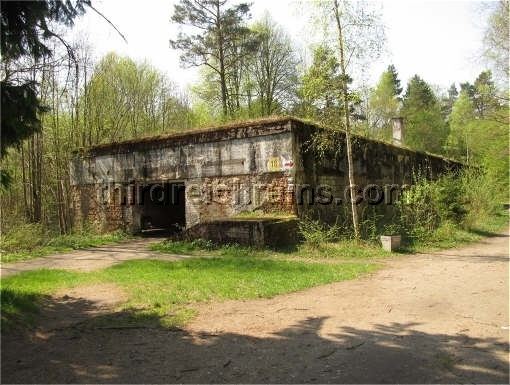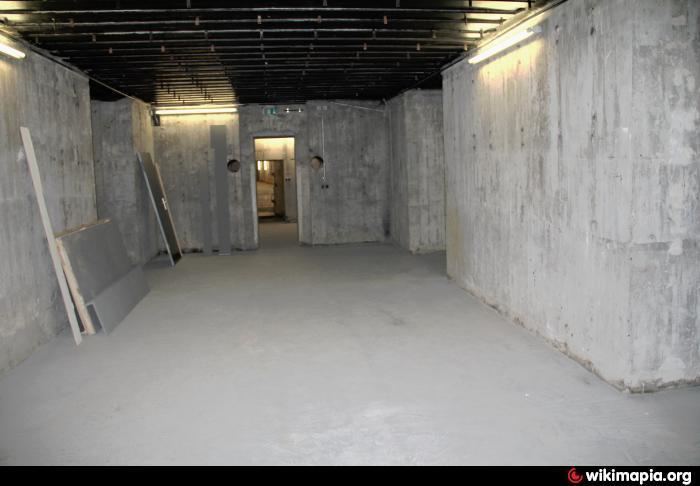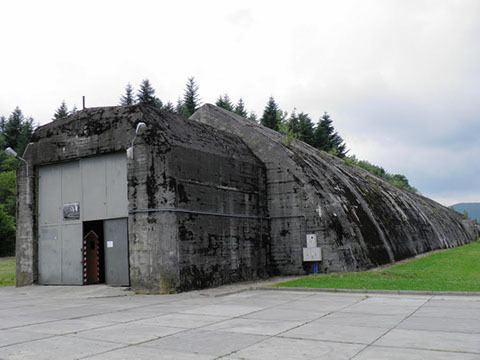Similar Wolf's Lair, Festungsfront Oder‑Warthe‑Bogen, Książ, Amber Room, Czocha Castle | ||
The Führer Headquarters (Führerhauptquartiere in German), abbreviated FHQ, is a common name for a number of official headquarters used by the Nazi leader Adolf Hitler and various German commanders and officials throughout Europe during the Second World War. Perhaps the most widely known headquarters was the Führerbunker in Berlin, Germany, where Hitler committed suicide on 30 April 1945. Other notable headquarters are the Wolfsschanze (Wolf's Lair) in East Prussia, where Claus von Stauffenberg in league with other conspirators attempted to assassinate Hitler on 20 July 1944, and Hitler's private home, the Berghof, at Obersalzberg near Berchtesgaden, where he frequently met with prominent foreign and domestic officials.
Contents
werwolf
Introduction
At the beginning of World War II there were no permanent headquarters constructed for the German supreme leader, the Führer. Hitler visited the frontlines by using either aeroplane or his special train, the Führersonderzug; thus, the Führersonderzug can be considered as the first of his field headquarters. The first permanent installation which became a Führer Headquarters was the Felsennest, which was used by Hitler during the Battle of France in May, 1940. Hitler actually spent very little time in Berlin during the war, and the dwellings he most frequently used were the Berghof and the Wolfsschanze, spending more than 800 days at the latter.

The Führer Headquarters were especially designed to work as command facilities for the Führer, which meant all necessary demands were taken into consideration; communications, conference rooms, safety measures, bunkers, guard facilities etc. were prepared accordingly. Even Berghof and the Obersalzberg complex were modified and extended with considerable defense facilities (bunkers, guard posts etc.). The Wehrmachtbericht, a daily report on the situation at the front, was also broadcast from the Führer Headquarters.

The Fuhrerhauptquartiere programme used over one million cubic metres of concrete, more than half at Anlag Riese and Wolfschlucht II. Forced labourers worked for nearly twelve million working days; two-thirds at Anlage Riese, Wolfschlucht II and Wolfsschnase.

The Führer Headquarters cannot be considered as strict military headquarters; the Wehrmacht had their own, distinctly located in other places, yet often in the vicinity of the FHQs. Nevertheless, since Hitler very frequently intervened in the military command structure, the FHQs more than often became de facto military headquarters. In reality, the Führer Headquarters consisted of Adolf Hitler and his entourage, including the Oberkommando der Wehrmacht (OKW) (directly controlled by Hitler), liaison officers and adjutants.
Notes on the term
Every place Hitler stayed cannot be considered as a Führer Headquarters, and he did not stay at every official FHQ. Furthermore, some sources may not refer to the Berghof and the Führerbunker strictly as official German Führerhauptquartiere at that time in history, but both of them became de facto Führer Headquarters; thus, they are historically often referred to as such. The Berghof was modified in much the same way as other FHQs, and Hitler had daily conferences on military matters here at the latter part of the war. The "Eagle's Nest", i.e. the Kehlsteinhaus, was rarely used and may not be considered a FHQ as such alone; however it was associated with the Berghof and part of the Obersalzberg military complex.
The Führerbunker was located about 8.5 metres (28 ft) beneath the garden of the old Reich Chancellery at Wilhelmstraße 77, and 120 metres (390 ft) north of the new Reich Chancellery building at Voßstraße 6 in Berlin. It became a de facto Führer Headquarters during the Battle of Berlin, and ultimately, the last one of his headquarters.
Headquarters locations
There were about 14 known completed Führer Headquarters (of about 20 planned):
Special train (Führersonderzug)
The Führer's special train was used first during the Balkans Campaign in early 1941. The train was ironically named Führersonderzug "Amerika" in 1940, and later Führersonderzug "Brandenburg". After the Balkans Campaign the train was not used as a Führer Headquarters, but Hitler used it throughout the war when he travelled between Berlin, Berchtesgaden, Munich and other headquarters.
The exact elements of the train is not known, but some details were revealed by the departure information "Bln 2009", when the train departed the Anhalter Bahnhof in Berlin on 23 June 1941, arriving at Wolfsschanze on 24 June 1941;
The individual 17 components (locomotives and cars) in order were:
Otto Dietrich indicates that the Flakwagen never had to be used when Hitler was travelling. The "Pressewagen" was to receive and release press reports, not for journalists.
There were other special trains (Sonderzüge in German) used by prominent German officials;
